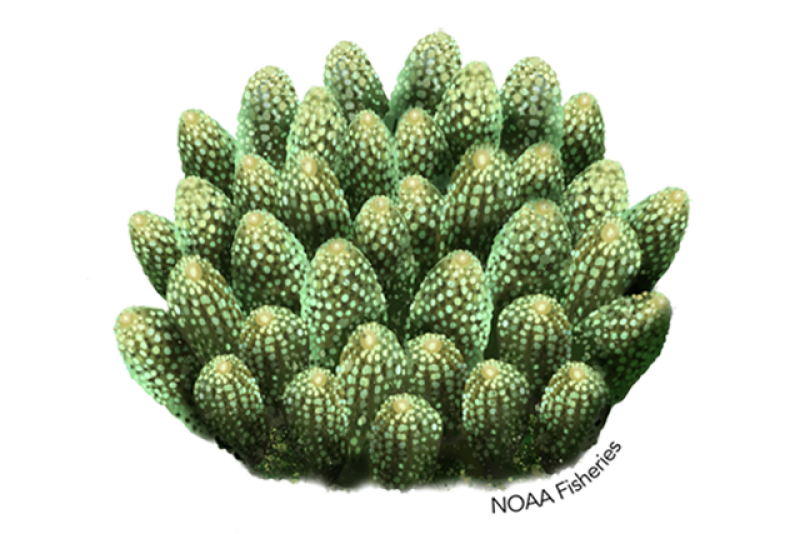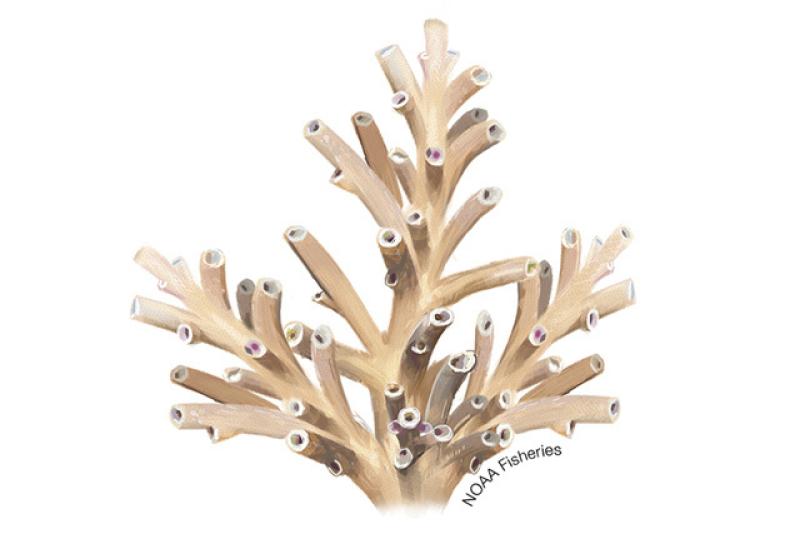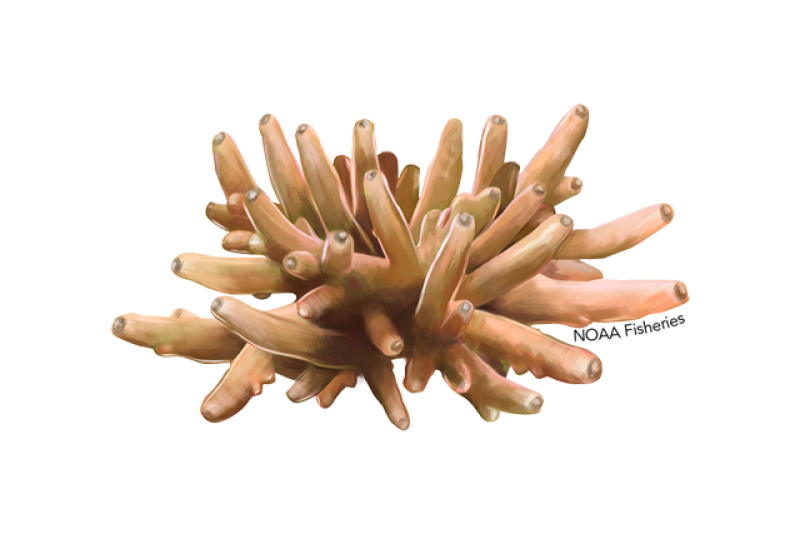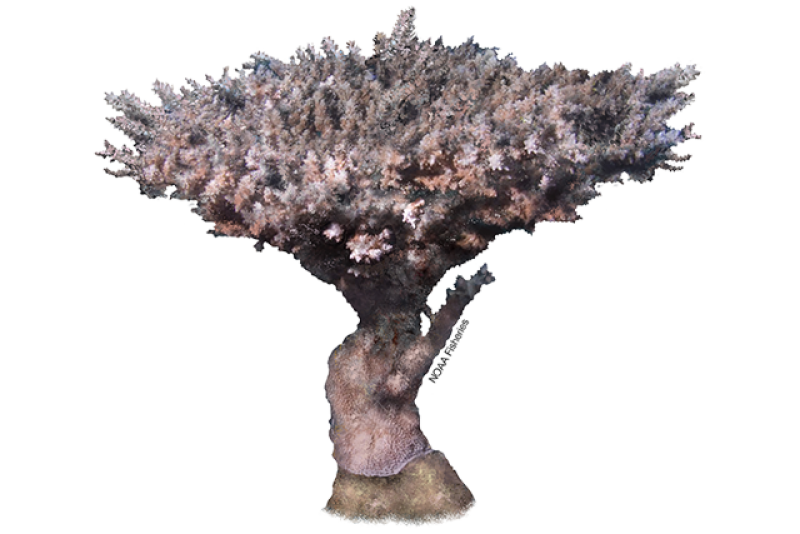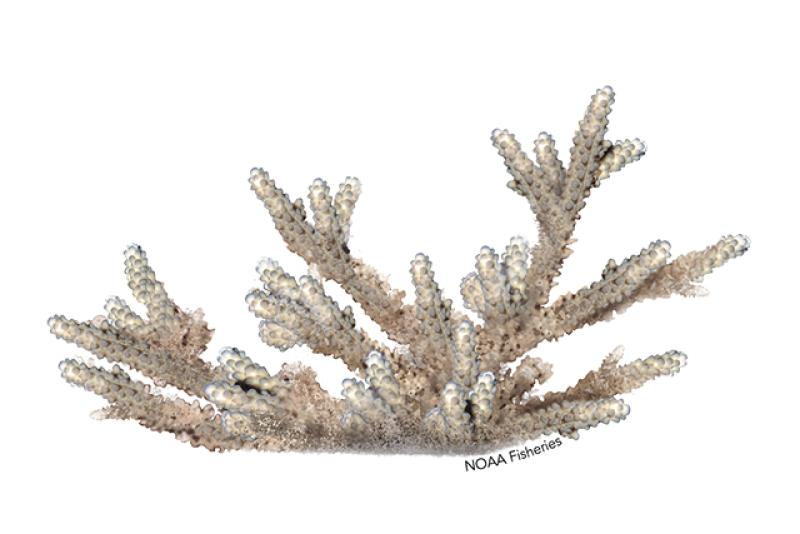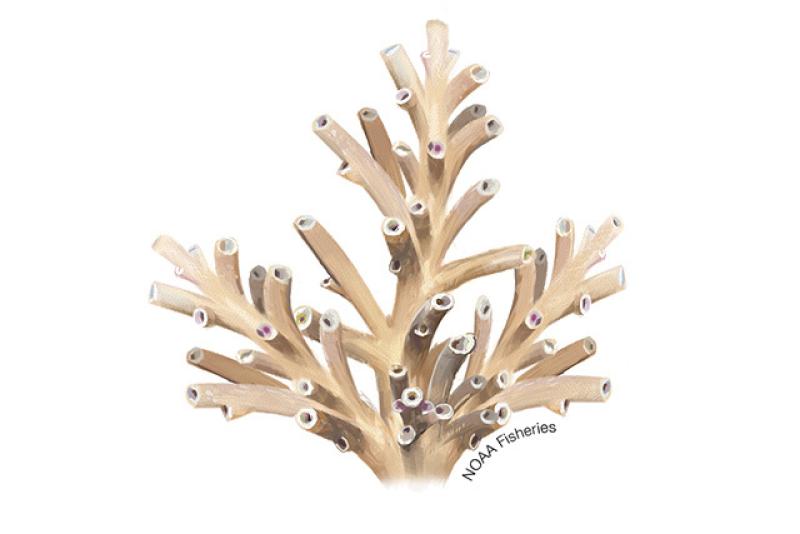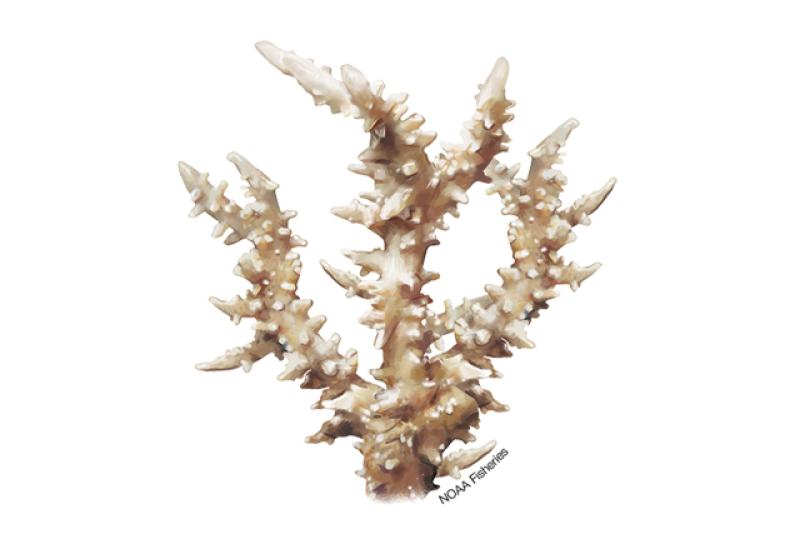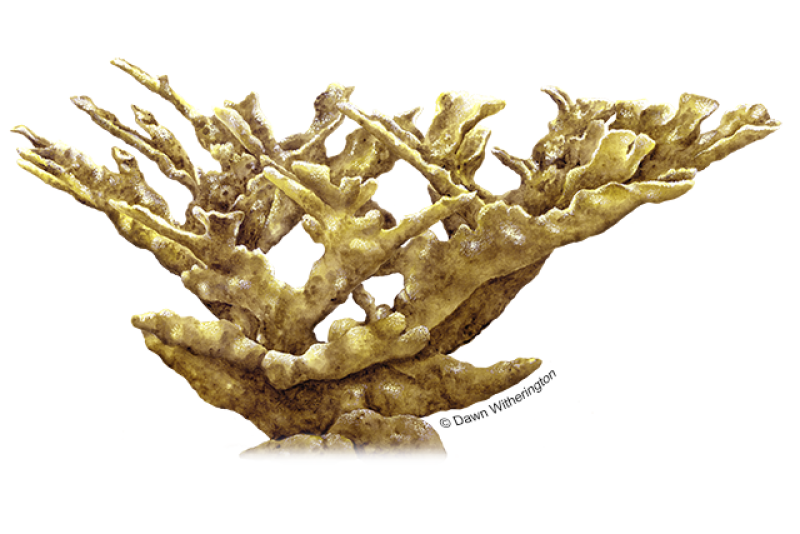Corals are diverse groups of invertebrate animals. Coral polyps are tiny, soft-bodied organisms that are related to jellyfish and sea anemones.
Different species of coral are found in different habitats and different locations around the world. Hard corals like lobed star coral and pillar coral are reef-building corals. Colonial hard corals, consisting of hundreds to hundreds of thousands of individual polyps, are cemented together by the calcium carbonate “skeletons” they secrete. As colonies grow over hundreds and thousands of years, they join with other colonies and become reefs. Some of the coral reefs on the planet today began growing over 50 million years ago.
Soft corals do not produce a rigid calcium carbonate skeleton and do not form reefs, although they are often found in reef ecosystems. Soft corals are also colonial animals. Often, what appears to be a single large organism—resembling trees, bushes, fans, and whips—is actually a colony of individual polyps combined to form a larger structure.
Coral reefs teem with life. Although they cover less than one percent of the ocean floor, they support about 25 percent of all marine creatures. Corals are particularly vulnerable to the effects of human activities including pollution, climate change, sedimentation, and fishing. Under the Endangered Species Act, more than 25 coral species are listed as threatened or endangered.
NOAA Fisheries works to better understand and conserve coral species and coral reef habitats both domestically and internationally.
Species News
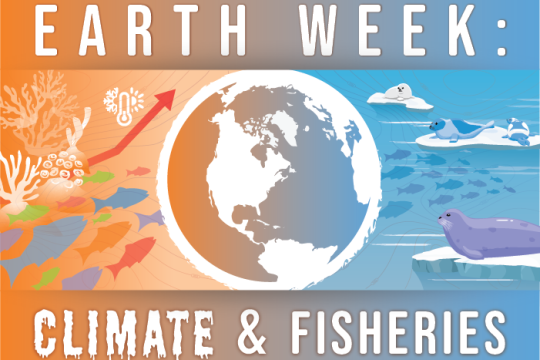
 A few of the highlights from the 2023 mission. Credit: NOAA Fisheries
A few of the highlights from the 2023 mission. Credit: NOAA Fisheries
 Fish community on a reef offshore of Baker Island, a remote equatorial island. Credit: NOAA Fisheries/Jeff Milisen
Fish community on a reef offshore of Baker Island, a remote equatorial island. Credit: NOAA Fisheries/Jeff Milisen
 Acropora globiceps at Tinian island, Commonwealth of the Northern Mariana Islands. Under the Endangered Species Act, A. globiceps is listed as threatened in CNMI, American Samoa, Guam, Hawaiʻi, and the Pacific Remote Islands Area. Credit: Doug Fenner
Acropora globiceps at Tinian island, Commonwealth of the Northern Mariana Islands. Under the Endangered Species Act, A. globiceps is listed as threatened in CNMI, American Samoa, Guam, Hawaiʻi, and the Pacific Remote Islands Area. Credit: Doug Fenner
Multimedia

 The branches of fast-growing elkhorn coral provide important habitat for fish. Populations of this iconic coral have declined across the Caribbean due to disease, bleaching and storms. Credit: NOAA
The branches of fast-growing elkhorn coral provide important habitat for fish. Populations of this iconic coral have declined across the Caribbean due to disease, bleaching and storms. Credit: NOAA
Research
Pillar Coral Permitting under the Endangered Species Act
Guidance for researchers and restoration practitioners if pillar coral is reclassified as endangered
Current and Past Ruth D. Gates Coral Restoration Innovation Grant Projects
The Ruth D. Gates Coral Restoration Innovation Grants support resilient coral ecosystems.
Frequent Questions: Ruth D. Gates Coral Innovation Grants
Find answers to frequent questions about the FY2024 Ruth D. Gates Coral Restoration Innovation Grants
Marine Protected Species of the Hawaiian Islands
Pacific Islands species lists under NOAA Fisheries jurisdiction from the Hawaiian Islands.
Understanding Ocean Acidification
Learn how our oceans are absorbing increasingly more carbon dioxide from the atmosphere, leading to lower pH and greater acidity.



